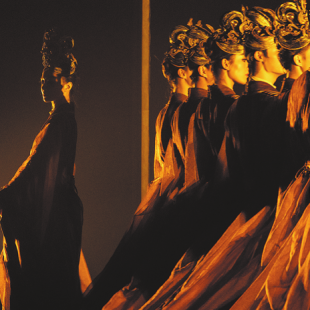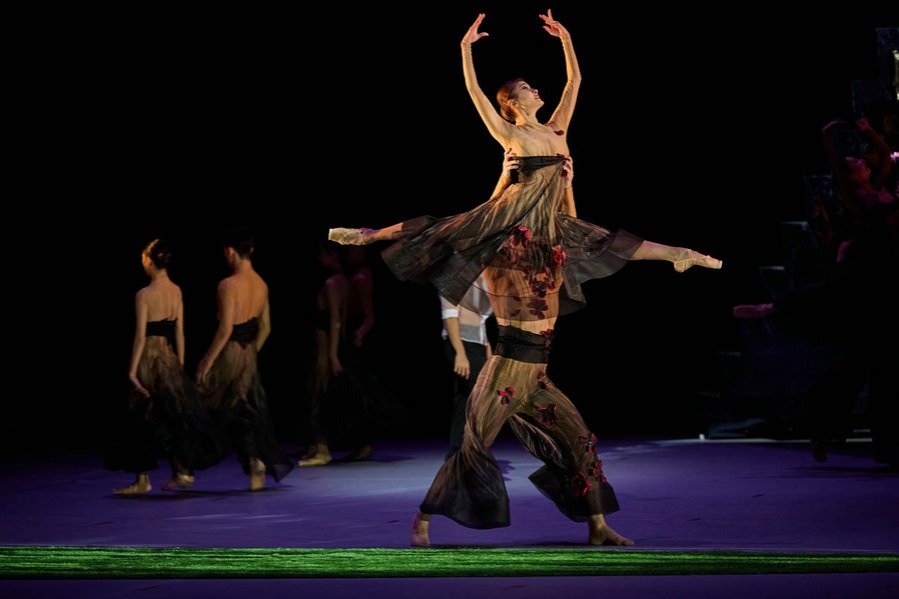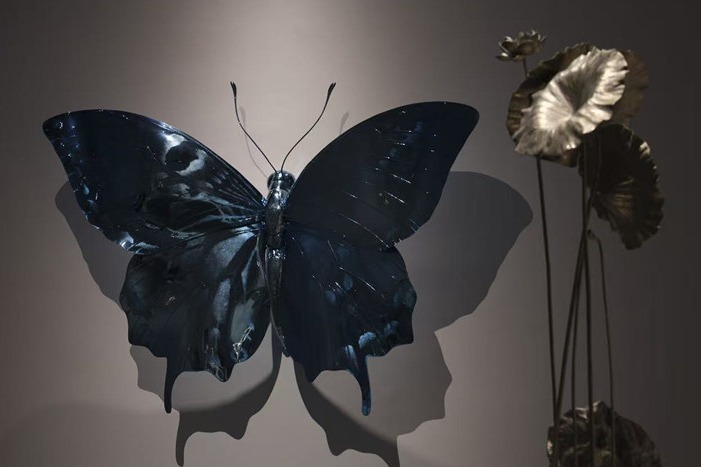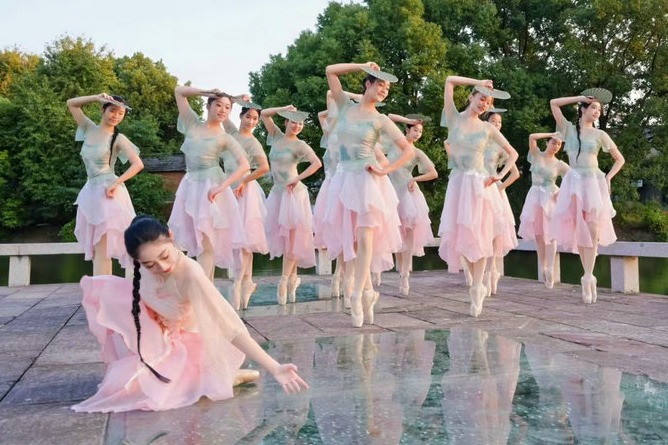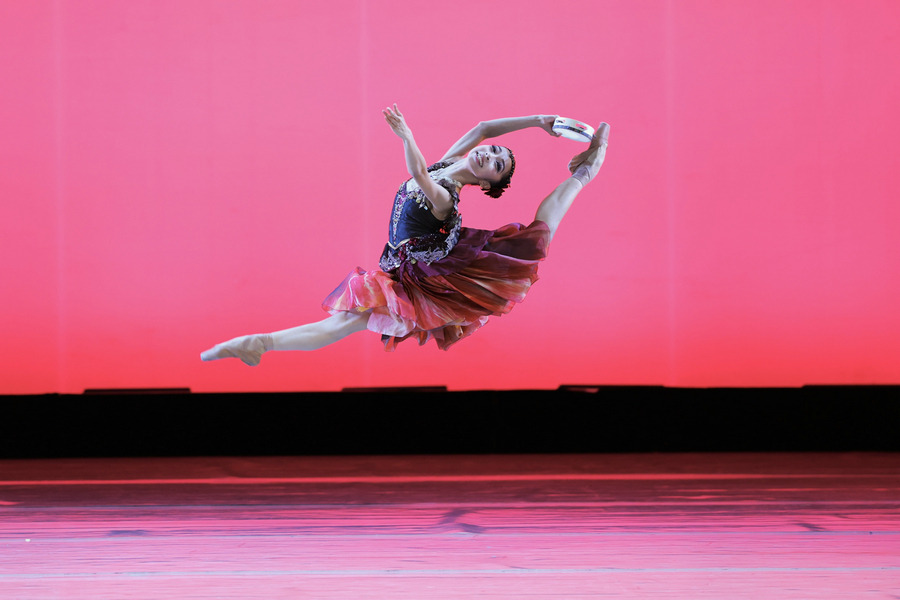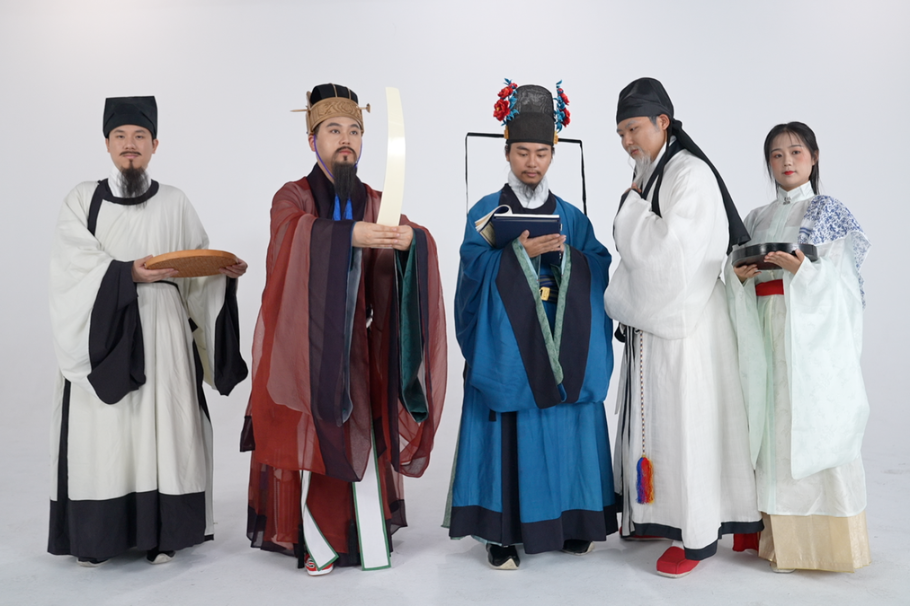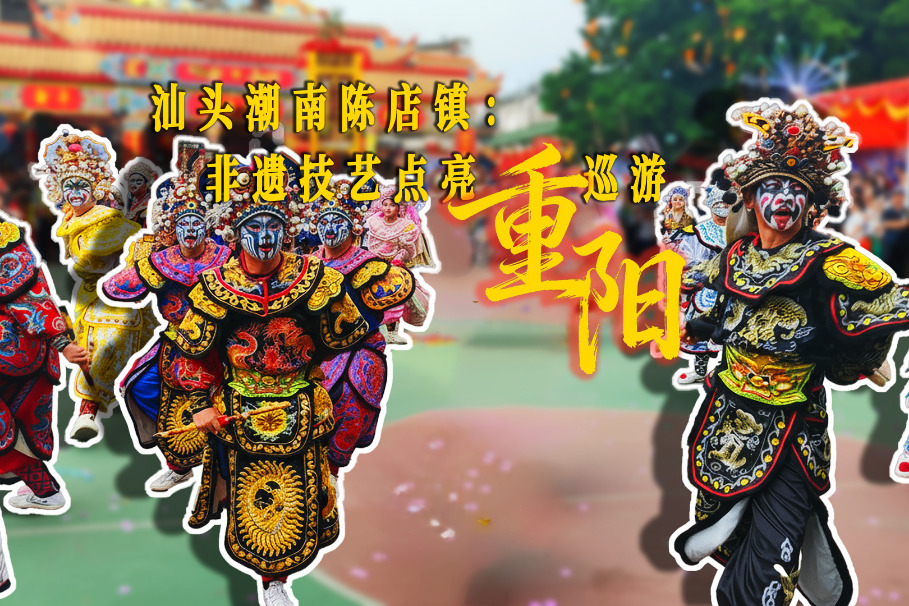Dance's dramatic steps breathe life into palace's relics

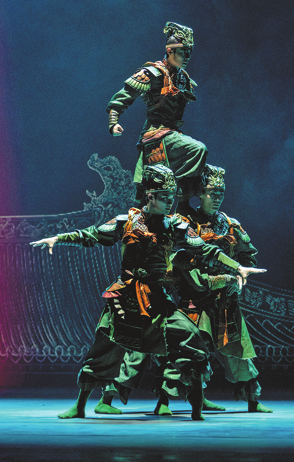
Deep in the annals of history, Yongle Palace, a Yuan Dynasty (1271-1368) Taoist temple in Ruicheng county, Shanxi province, stands as a silent witness to centuries of grandeur. Its halls and murals hold the whispers of artisans, the elegance of architectural mastery, and the dignity of cultural heritage.
When the story of this palace meets the art of dance, the boundaries of time and space dissolve. The Palace Through Time, a dance drama centered on the 1950s relocation of Yongle Palace, uses the language of movement to breathe life into ancient artifacts, bringing cultural treasures that once lay dormant in museums onto the stage. The production premiered in Beijing on Oct 3 and concluded on Oct 5 before launching a nationwide tour to cities including Taiyuan in Shanxi province, Wuhan in Hubei province, and Shanghai.
The drama's narrative is structured around four aesthetic dimensions — architecture, murals, glaze, and heritage. Yongle Palace, built between 1247 and 1358 with a sprawling area of nearly 248,000 square meters, was relocated as a measure of protection in the late 1950s about 2 kilometers north of its original site, for it being within the planned reservoir area of the Sanmenxia Dam on the Yellow River.
In 1961, it was designated a national key cultural heritage site, preserving its historical and artistic significance for future generations.
The dance drama's creative team began researching and visiting Yongle Palace over two years ago. Through the dancers' movements, the drama fuses timeless history with the pulse of modernity, telling the story of artisans and cultural guardians who quietly preserved these treasures.
"Several core dance sequences in the production stand as exemplary interpretations of 'relics in motion'," says director and choreographer Xie Yuanzhen.


